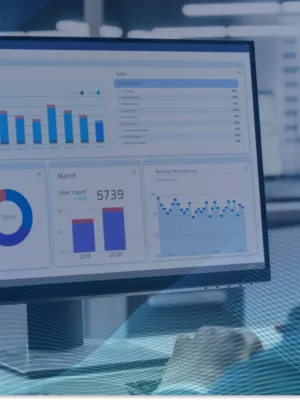
Whether you want to enhance your online presence, create digital products around customer expectations, or develop software applications to streamline your operations, you are up to running a project in the digital world. While there are many areas and skill sets beneficial for both traditional and digital projects, in this post we will cover areas and some specific components that matter the most for the success of digital projects.
1. Commit

To ensure the success of any digital project, your overall commitment is extremely important. It starts with setting defined goals and adequate expectations and deliverables, bringing together the right people, and assigning the right person to lead the project. When a sense of commitment is embedded on a senior level, it seamlessly cascades down to other project members.
Many business owners often overlook the significance of selecting a project lead with practical experience in the digital environment. Ensure that the project lead is well-versed in industry trends, UX/UI concepts, the latest technologies, and emerging platforms. They do not have to be an expert but have to have an adequate level of knowledge to engage with a third party and your organization’s tech team, as an example.
Remember, this individual will serve as your primary guide and spokesperson, guiding you through the process of converting technical terms into comprehensible business language, elucidating the effectiveness of specific solutions for your organization, negotiating terms and conditions on your behalf, and fostering trust throughout the process.
In other words, whether you are a business owner or a project ambassador, plant a seed of commitment from the very beginning to make things happen.
2. Communicate

As obvious as it may sound, communication remains one of the challenging areas that impact the success of any digital projects. According to some studies, 57% of projects fail due to poor communications.
Nowadays, a number of communication tools are enormous. Think about all the e-collaboration tools, web conference platforms, and messengers such as Slack, Bootcamp, and GoToMeeting.
Has it shaped our communications culture and methods? It definitely has.
But all these tools and cool technologies are useless if you lack a a communication strategy and plan aligned with project deliverables. Your stakeholder groups, impacted by the project outcome, have to speak to each other through the project life cycle consistently. There is no worse scenario than when key stakeholders, influencers, and decision-makers get involved only in the middle of the project. It typically involves delays, cost increases, and loss of trust.
As mentioned earlier, your digital project manager with the right set of skills has to foster ongoing communications with internal and external stakeholders. Also, make sure this person has a “voice,” authority, and trust to effectively manage the project stakeholders and drive the decision-making process.
And last but not least, your digital project lead should be the one and primary contact person for any issues or concerns arising during the project. Let him or her orchestrate the process and make things happen.
3. Collaborate

Collaboration is the core of any project, regardless of size, scope, and length. When it involves collaborating on digital projects such as the development of a new website, implementation of new software solutions, and automation of processes, it is important to understand key deliverables, milestones, risks, roles, and responsibilities.
Any digital project is like a puzzle where all pieces matter and impact the final result.
Let us cover a few “puzzle pieces” that, very often, need more collaborative efforts as they involve digital projects.
Technical requirements.
This is all about customer needs, wishes, goals, or things to happen as a result of the project. This is your “what.” Technical requirements are your main ingredients that make things happen.
The risk of not having clearly defined requirements involves loss of time, increased costs, delays, and poor project outcomes. As a service provider, when we know the client’s “what,” it is up to us to recommend the” how”—technologies, solutions, best practices, etc. As discussed earlier, your project lead has to engage with internal stakeholders to collaboratively determine requirements.
Have content ready.
“Content is king” (as Bill Gates would say) is still very relevant but often overlooked. Content development is a key component of any digital project. It should be accurate, customer-centric, engaging, and consistent. Good content creation takes effort and collaboration. One of the common challenges around content development (from a web developer perspective) is the lack of process, roles, and responsibilities over content creation, editing, and approval.
It results in loss of control, miscommunication, and thousands of revisions. Delays are inevitable. To better manage the content development, you should define roles, levels of authority, and use technologies to streamline the process.
Identify quality assurance (QA) requirements.
The role of QA is another area that plays a big role in the success of the project. QA criteria, depending on the scope of the project, must be factored into the deployment phase. Here are a few things to consider.
- Choosing the right release criteria for different project phases. You can’t test everything endlessly.
- QA assurance criteria should be aligned with your key technical deliverables.
- QA criteria and timelines should be agreed upon and approved by a client. The idea here is that what is “done” is actually done.
- QA is a collaborative process that involves a cross-functional team.
At Convergine, we ensure that the QA process is embedded into the project to ensure we deliver a quality product or service.
Want to know how we built 300+ digital projects? Explore our project journal to learn about our solutions and development process.










